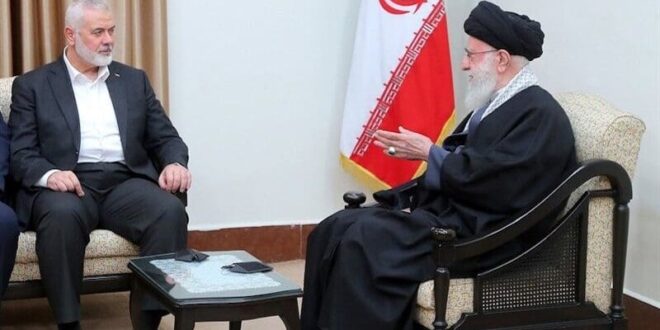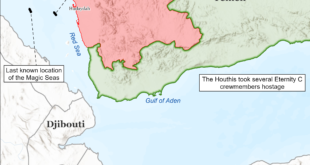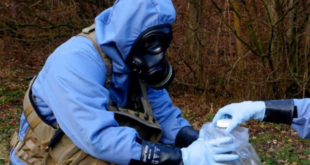While addressing the Islamic governments on October 3 2023, Iran’s Supreme Leader Ayatollah Ali Khamenei warned leaders against normalising their relations with Israel, equating all initiatives to betting on a losing horse. Meagre days after his address to the Islamic governments, Hamas fighters infiltrated Israeli territories, culminating in an ongoing war in Gaza. The war not only reversed normalisation processes between Israel and Saudi Arabia, but shifted even the staunchest sympathiser (public sympathy poured for Israelis in the first few weeks) towards Palestinians (and the Islamic world) as the battle in Gaza enraged.
Although Tehran denied its role in orchestrating the October 7 attack, experts argued on Tehran being deliberately kept in the dark on the nature/specificity or intensity of the attack despite Tehran’s strategic control over Hamas. That said, political leadership in Tehran continue to take the credit post-October 7, threatening Israel in roughly all political/non-political gatherings. For Ayatollah’s followers the conflict is of greater significance particularly to the Islamic World, strengthening their anti-US discourse/narrative, proving their investment in the axis of resistance (including Hamas) effective even against global powers.
With Israeli Defence Forces combatting Hamas fighters in Rafah, Tehran’s regional security policy (post Hamas attack on October 7) can be summarised below:
According to Tehran, it continues to deter US/Israeli offensives, successfully
According to Tehran, it has managed to increase the financial cost of Israeli offensives in Gaza, forcing US to pivot between Ukraine and Israel, and managed to prevent Gaza war from escalating into a regional conflict
According to Tehran, it has successfully maintained a synergy between axis of resistance against US/West/Israeli military and diplomatic effortsTracing Tehran’s response post-October 7
Responding to Hamas attack on Israel, Washington began deploying substantial military assets in the region in the first two weeks post-October 7. Among the military assets were Two aircraft carrier battle groups, a marine rapid response force reinforced with air defence batteries (few artillery pieces) and significant number of rotary/fixed wing aircrafts. Their mandate was to deny Iranian proxies in exposing/targeting any weakness in Israeli defences, with the possibility of a joint US/Israeli response in case of a similar styled incident or a direct Iranian engagement. To this, Tehran maintained a posture of deterring any joint US/Israeli attack, if the latter decides to respond through any military means.
While analysing Tehran’s response after October 7 (statements issued during public discourses or formal address issued by political leadership), the pattern reflect serious gratification. This is reflected from Supreme Leader’s first public address after October 7 where he not only endorsed the violence but also described the attackers as brave Palestinian youths. His carefully crafted words not only reflected support to the local Palestinians but painted the Hamas attack as a sole Palestinian initiative, denying Tehran’s involvement. Since then, the political leadership in Tehran continue to reiterate (over and again) October 7 attack as a sole Palestinian effort, painting it as a response to Israeli occupation of their lands. That said, the group’s strength reflects sustained support from Tehran, which according to the author, could have been instrumental in empowering them to carry out the October 7 attack. Though, none of the global powers could confirm Tehran’s direct role, experts continue to speculate the role of Hezbollah commanders to have trained Hamas militia in Syria and Lebanon.
Beside addressing Iranian public (and members of the Islamic world), Tehran initiated a sustained diplomatic campaign to strengthen Palestinian support flooding in Europe. Political leaders began a sustained campaign throughout the Middle East, with the intention to counter Israel’s diplomatic engagement with the Arab states and strengthen its own, in particularly with the Kingdom of Saudi Arabia. The efforts included the then Iranian foreign minister late Amir-Abdollahian touring several Arab states, to seek support for axis of resistance, countering Washington’s influence in the region.
As the world transitioned to 2024, Tehran’s regional strategic policy focussed on achieving three key objectives:
De-escalating regional conflict
Political leaders in Tehran sensed a possible conflict emerging with Washington and Tel Aviv, which accelerated their approaches in the Gulf in particularly with Saudi Arabia, who were under immense pressure from Washington. This was evident from UAE restricting US air assets from using their airspace, and the widely covered engagement between the late President Raisi and the Saudi Crown-prince Mohammad Bin Salman in the background of an emergency summit hosted by the Organization of Islamic Cooperation. But, no Arab nation rallied with Tehran’s call for imposing sanctions against Israel, painting Tehran’s discourse strategy partially effective.
More munitions, more the cost
Additionally, on the recommendations from IRGC, Tehran focussed on increasing the intensity of attacks in Gaza, with an intent to increase the cost of munition support supplied by Washington (to Tel Aviv) while preventing regional escalation. For this, Tehran tasked Hezbollah, Hamas and some factions of the PIJ to intensify offenses in Gaza. This resulted in Hezbollah’s renewing escalation in the northern border towns of Israel bogging the IDF. That said, Tehran not only raised the financial cost of conflict by bogging down the IDF in multiple theatres, but also managed to prevent the conflict from further escalation.
Unity of the fronts strategy
Post-October 7, Tehran maintained coherence within the Axis of Resistance, intensifying military actions against any and all US/Israeli offensives. To create pressure on the IDF Tehran employed a two prong strategy:
Counter Tel Aviv/Washington diplomatically at all international platforms
Increase the intensity of military action in Gaza, cornering IDF on multiple fronts.That said, the quick integration/mobilisation of axis of resistance factions in support of Hamas – each with a different political/militant hierarchy and expectations surprised the political leaders not only in Tehran but senior hierarchy in Hamas, proving their effectiveness. That said, it further proved their efficacy as a critical tool of coercive diplomacy, in the light of Tehran’s ability to control and command various groups (with varied interests) sharing responsibilities (between axis members), demonstrating discipline. For certain, the attack of October 7 has proved the Axis of resistance as a tool unsuitable in a direct/conventional military engagement as it relies majorly on numerical strengthen, devoid of necessary military hardware and aerial support.
It will not be incorrect to say that, by countering the Israeli Defence Forces (IDF) in Gaza, Tehran has proved the efficacy of Axis of resistance by demonstrating coherence and their ability to increase the cost of war. That said, since October 7 Tehran appears to aggressively expand its diplomatic influence in the Middle East (to counter Washington’s influence) making the most from the wave of support emanating for the Palestinians, which, according to the author, may not deliver desired outcome.
The Challenge ahead
It is without a doubt Tehran has strengthened its diplomatic stance in the Gulf since October 7, however its neighbours Pakistan and Iraq might disagree. Tehran may have conducted missile strikes in vengeance, instead deteriorated relations with their neighbours.
On 16 January 2024, Iran conducted airstrikes in Pakistan with the intent to take revenge for eleven Iranian border guards killed by Jaish al-Adl, an ethnic Balochi militant group, few weeks before. After the visit of President Raisi to Pakistan, the mood of the nation appeared to become favourable towards Iran, resentment was felt from the Pakistani military establishment which, according to one expert, pressured the civil government to take a stronger stance. The IRGC may have failed to establish communication with their Pakistani counterparts, Rawalpindi based General Headquarters (GHQ), according to one source, recommended for greater retaliation with the intent of showcasing strength.
That said, also on 16 January, the Islamic Revolutionary Guard Corps (IRGC) launched a missile attack on Erbil, Kurdistan Region of Iraq violating Iraq’s territorial integrity. IRGC intended to target a Mossad base of operations in the city, but did not provide any evidence or proof of their claim to the Kurdistan Democratic Party (KDP). According to one Kurdish scholar, this episode played negatively, reversing diplomatic relations with neighbouring countries.
That said, Tehran’s strategic policy after October 7:
Put a temporary halt on nuclear diplomacy,
Heightened tensions with the West,
Elevated economic pressure on Iran,
Created rift with neighbours (Pakistan and Iraq)The road ahead
According to Tehran, the synchronisation between various axis of resistance groups and the losses it inflicted upon Israeli Defence Forces (IDF) and US, amounts to a victory. Although, Tehran’s relationship with the Gulf appears to normalise, one expert highlight some mistrust within gulf economies, emanating from GCC’s inability to engage with Tehran constructively. Hamas attack on October 7 and subsequent aftermath (on-going war in Gaza) may have benefitted Tehran in achieving significant gains, giving it the opportunity to formulate a strategic policy for regional space, while creating long term challenges.
 Eurasia Press & News
Eurasia Press & News


